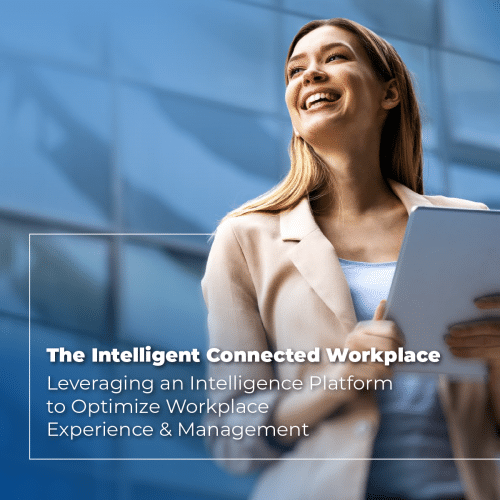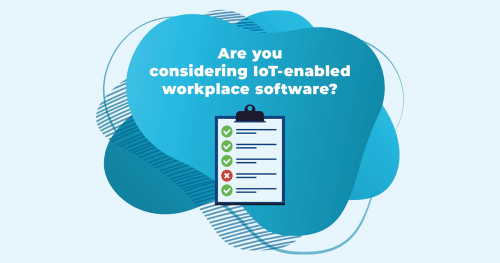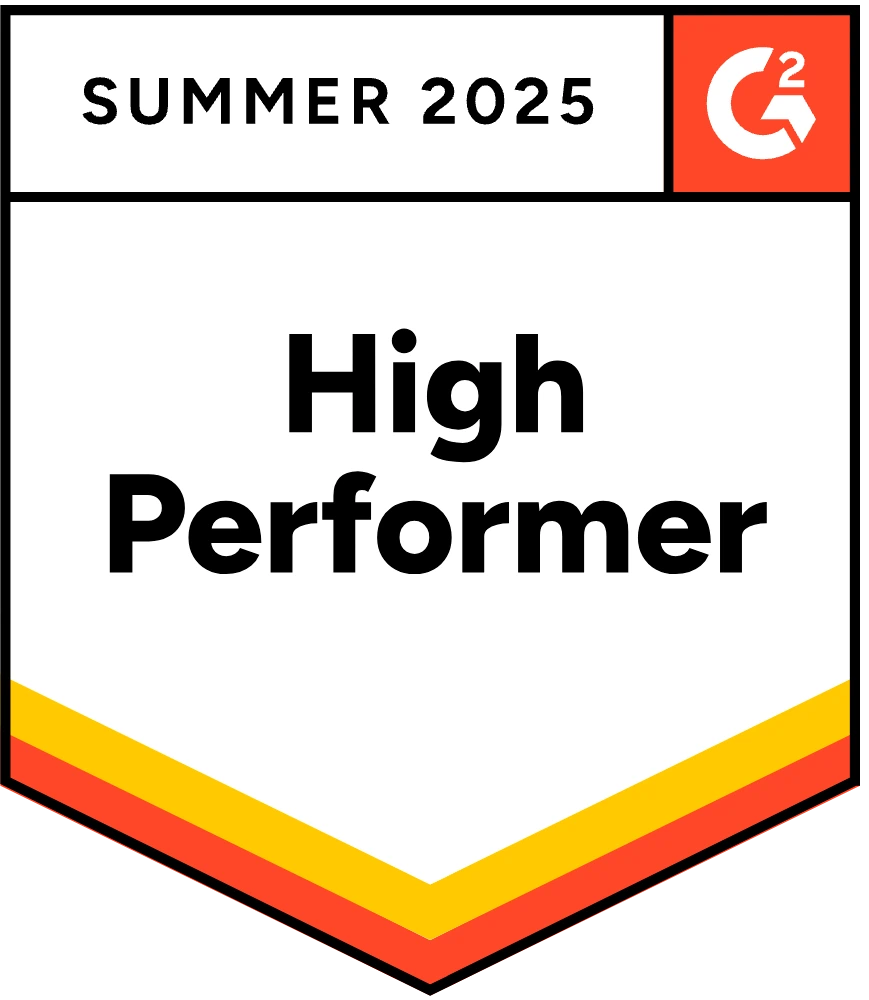After 18 months of living with COVID-19 constraints, most knowledge workers have become accustomed to working from home. We’ve all had ample opportunity to experience the pros and cons, and many feel they would like to continue working remotely post-pandemic at least partly. A hybrid mode of working – which alternates WFH with in-office work – is not only the preferred solution for Gen Z. It is also seen by many office workers as offering the best of both worlds. To remain competitive in this flexible new work landscape, buildings will need to adapt and offer smart workplaces that enable better insights into how they are being used.
Smart workplace scenarios
The hybrid workplace creates a demand for flexible space. But it also needs smart services that make the most of that space. Technology both drives and enables this smart workplace revolution. IoT-related technologies play a key role, and companies increasingly use sensor data to enable new smart workplace scenarios. Scenarios that range from space and comfort tracking to workplace guidance, and increasingly also transforming service workflows and building management.
How should you plan your post-pandemic smart workplace strategy to realize the full potential of these technologies?
Smart workplace scenario planning
There is no one-size-fits-all strategy for smart workplace scenario planning. It really depends on your business priorities. Nevertheless, in a first stage, organizations typically MONITOR parameters such as building occupancy, comfort, and air quality. The data is rendered on dashboards and heat maps to understand trends and support decision-making. As a next step, the same data is frequently made available through interactive screens and mobile apps to ASSIST occupants in real-time. In a further stage, organizations often use sensor data and smart apps to TRANSFORM the way their buildings are managed and serviced.
In this way, businesses can leverage a one-time investment in IoT sensors for multiple scenarios, which can be implemented using a phased approach. Let’s have a look at 3 major dimensions.
#1 Monitor
The first use case for many organizations is undeniably space occupancy monitoring and analysis. This should come as no surprise. Before the pandemic, businesses globally underutilized an average of 40-50% of their space on a typical workday. In the post-pandemic hybrid workplace, occupancy becomes less predictable with big fluctuations, and peaks and troughs during the week. Businesses, therefore, need to recalibrate their workspaces. By using simple, sensor-based analytics to understand building occupancy, organizations can make huge savings. Occupancy data provides insights to reduce vacancy and maximize real estate utilization. It also informs more effective workspace layouts and helps workplace leaders determine the optimal desk-to-employee ratio (AXA case story) in an activity-based working environment.

#2 Assist
Real-time occupancy sensing is key to space optimization. But the same data, rendered through different touchpoints, can also support workers to make the most productive use of the workplace. Occupants today expect to interact with their buildings in much the same way they interact with other things in their life: from their phones. So, showing real-time space availability on a mobile app is no longer a nice to have. It’s a must now. Additional touchpoints can be kiosks in high-traffic areas or room scheduling panels outside meeting rooms, showing the room’s occupancy status with colored LEDs.

#3 Transform
Workplaces with fixed spaces and assigned seating are giving way to more fluid office layouts that support flexible working. In much the same way, service delivery according to fixed plans and schedules is being replaced with an outcome-based service model. This new, dynamic way of providing services puts people first and focuses efforts where they matter most. It is driven by actual usage, tracked in real-time. In addition, users can also request on-demand services. Cleaners and technicians get visual instructions on mobile devices, showing them on a floor plan where to go and what task to perform.
Combining multiple smart workplace use cases
Profitable exploitation of IoT in the workplace can be realized through a single use case, such as space optimization. However, the return can be even more important through a combination of smart workplace scenarios. Companies are increasingly using data sets collected for one scenario to enable others. They don’t stop at monitoring and analyzing anymore but use live sensor data to create more responsive spaces and services.
Using existing data (you did not realize you had)
There is not always a need to install new sensors, either. Chances are you already have a lot of building data (e.g., thermal comfort data) in a Building Management System (BMS). In that case, it makes good sense to use a smart building platform such as Cobundu, to unlock this data, analyze it, and make it actionable for facility teams and building users.
Please feel free to contact us to explore how smart workplace scenarios could benefit your business.











